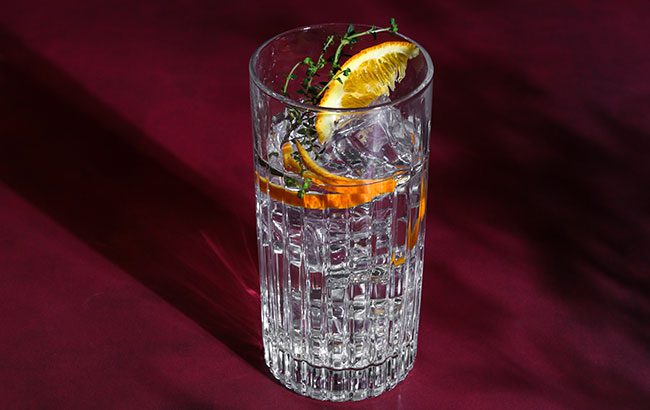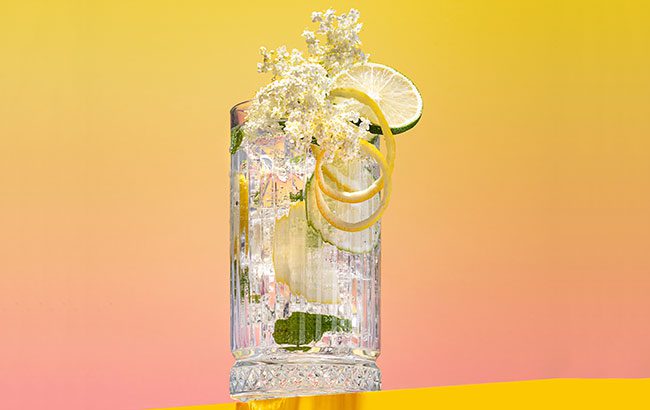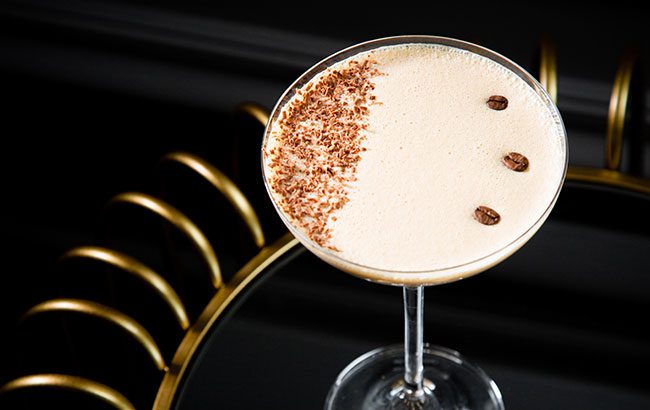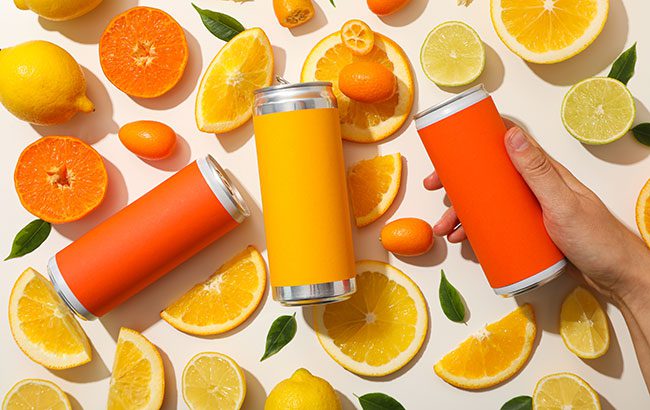Global travel retail report 2025 part two
By SB editorialThe second half of our annual report into the global travel retail channel analyses vodka, gin, rum, liqueurs and RTDs. Joe Bates and Kevin Rozario report.

The first instalment of the Global Travel Retail Report looked at whisky, Tequila, Cognac and brandy. An overview at the state of the travel retail and duty free channel was also analysed.
While Scotch whisky has had a hard time of late, investment in GTR has continued. Meanwhile, perhaps unsurprisingly, Tequila has been storming ahead in the channel.
For Cognac, China has presented myriad challenges for the category – both in GTR and domestically. However, brandy benefitted from a boost in tourism.
Keep reading for insights into vodka, gin, rum, liqueurs and RTDs. Part one of the Global Travel Retail Report is available online.
Vodka: high-end products defy category stagnation
 Vodka remains by far the largest white spirits category in duty free. While overall sales remained flat last year, the premium-plus price tier easily proved the spirit’s fastest-growing subsector, outperforming flavoured styles.
Vodka remains by far the largest white spirits category in duty free. While overall sales remained flat last year, the premium-plus price tier easily proved the spirit’s fastest-growing subsector, outperforming flavoured styles.
According to IWSR, premium-plus vodka grew by 16% in value and by 10% in volume last year, while ultra-premium vodka is forecast to expand by an even higher compound annual growth rate of 12% over the next three years.
Bacardi Global Travel Retail’s (GTR) new ultra-premium release, Grey Goose Altius, is a prime example of this premiumisation trend in the vodka category. Launched at Dubai Duty Free in July this year priced at AED432 (US$118), Grey Goose Altius is made with single-origin wheat from Picardie, France, and spring water from the French Alps. The single-distilled 40% ABV vodka is chilled and filtered at glacial temperatures of -24°C to create a natural ice crystallisation, which Bacardi says results in a well-rounded spirit with a smooth, velvety mouthfeel.
“With Grey Goose Altius, we are delivering a powerful proposition that answers rising demand in the ultra-premium white spirits category,” says Darragh Ryan, Bacardi GTR marketing director. “Its prestige cues, stunning presentation, compelling narrative and 360-degree activation strategy provide our retail partners with a rare opportunity to capture high-value conversions and drive category premiumisation.” After its GTR launch with Dubai Duty Free, a selected rollout for Grey Goose Altius will follow later this year, including at other selected global airports and cruise lines.
Meanwhile, Pernod Ricard GTR has also been paying attention to its high-end vodka offering for travellers. Absolut Elyx, a super-premium expression of the Swedish vodka is made with winter wheat grown on a single estate in southern Sweden, and distilled using a manually operated vintage copper still. Rae Gibson, brand director, premium and super-premium spirits, says the brand now sports a new bottle and label design. “The new design brings exquisite craftsmanship to life and the high-quality ingredients to the forefront.”
After last year’s Absolut Warhol bottle, the firm recently introduced another pop-art-inspired release into travel retail ahead of a wider domestic rollout in October. Absolut Haring honours Keith Haring, the US pop and street artist whose work became a symbol of New York’s vibrant downtown art scene in the 1980s. The bottle landed on shelves at selected airports in July, including at London Gatwick, where a vending machine dispensed Haring merchandise for travellers who bought a bottle.
July also saw the launch of a new super-premium vodka courtesy of British perfumer Jo Malone CBE, who partnered with G&J Distillers’ master distiller Joanne Moore and travel retailer Avolta to launch her three-strong Jo Vodka range at 100 airports worldwide. All three premium fusion vodka expressions are available at a duty free price of £29.99 (US$41), and are to be distributed in travel retail by Quintessential Brands.
The new range comprises three references: 101, The Purist, described as a “clean” and elegant vodka with a “smooth” finish; 102, The Bohemian, a bright and zesty blend of citrus notes, “perfect for sunny days”; and 103, The Artist, billed as a bold, floral expression, with delicate spice and Japanese tea notes.
Gin faces challenge of retaining customers and attracting new ones
 Gin’s heyday in travel retail may have passed, but it remains a core proposition in the channel. Volume growth has been flat (and/or contracting depending on the location) over the past two years between 2022 and 2024, but value growth has been good at 13%, according to IWSR – indicating premiumisation is alive and well.
Gin’s heyday in travel retail may have passed, but it remains a core proposition in the channel. Volume growth has been flat (and/or contracting depending on the location) over the past two years between 2022 and 2024, but value growth has been good at 13%, according to IWSR – indicating premiumisation is alive and well.
“Gin value has polarised between affordable value and super-premium-and-above craft gins,” says Charlotte Reid, IWSR’s senior insights manager – GTR. “While gin volume growth has declined in traditional European countries as interest wanes, craft gin is growing in Asia, Australia and New Zealand.”
Gin’s contraction is likely to continue in mature GTR markets, with a reset on the cards. “Ranges that are currently over-spaced are being cut in favour of ‘trendier’ drinks such as RTDs. There is also a migration from gin to vodka on value/versatility grounds, especially among European shoppers,” says Reid.
Nevertheless, gin has an opportunity by focusing on classic serves, daytime/aperitivo moments with lighter serves, and IWSR says this means premium traditional gins are expected to outperform in a shrinking base.
At Shelftrak, which uses AI to provide airport in-store SKU-level analytics, managing director Garry Stasiulevicuis says: “The era of unchecked growth is over, but gin still has a vibrant future if managed well. It is now a mature category so the challenge is no longer about listing more SKUs, but about ensuring every product earns its place on the shelf.”
Manuel Schilling, head of spirits buying at global travel retailer Gebr Heinemann, says: “We are seeing a continued interest in craft and authenticity, with consumers seeking out unique flavour profiles and brand stories.”
Edinburgh Gin has been expanding in GTR for a few years but owner Ian Macleod Distillers (IMD) has seen an evolution. William Ovens, IMD’s head of GTR, says: “We have noticed a slight dip in flavoured gin, but the increase in demand for our two core London Dry expressions, The Classic and Seaside, has more than compensated for that.”
Flavours still remain the major proportion of IMD’s gin sales, with Edinburgh Gin’s Rhubarb & Ginger full-strength line picking up new listings, with British Airways and Lagardère Europe for example.
“In travel retail, Edinburgh Gin continues to be highly strategically important for IMD,” said Ovens. Last year the brand even opened its own boutique in Avolta’s World Duty Free store at Edinburgh Airport. There, it just launched an exclusive limited edition gin called The Tropics, following on the heels of The Meadows, which sold out.
For relative new arrivals to GTR such as Salcombe Gin, the channel still offers huge growth prospects. Over three years the brand has expanded to 26 duty free stores in UK airports, and some ferries. Howard Davies, co-founder of Salcombe Distilling Company, says: “In the super- to ultra-premium segments where we sit, we are a very giftable product, and that makes GTR very attractive to us and to passengers.”
He remains optimistic about the channel: “Gin in UK travel retail has plateaued to an extent, but we are bucking the trend. Also in the past couple of years, flavoured lines were popular but people seem to be reverting back to traditional, classic dry gin – and are really looking for quality.”
Shelftrak’s Stasiulevicuis adds: “The GTR gin market is transitioning into a more mature phase, and the challenge for the segment now is to retain the customers it’s acquired during the last 10 years, and evolve in a structured way to attract new ones.”
Flavour drives Rum growth in GTR
 Rum performed better than gin last year in both value and volume, up by 15% and 6% respectively. However, the category is finding it hard to escape from its rum-and-Coke image, which has given Bacardí’s white rum plenty of on-shelf prominence, though dark, aged rums have also found their way in.
Rum performed better than gin last year in both value and volume, up by 15% and 6% respectively. However, the category is finding it hard to escape from its rum-and-Coke image, which has given Bacardí’s white rum plenty of on-shelf prominence, though dark, aged rums have also found their way in.
Charlotte Reid, IWSR’s senior insights manager – GTR, says: “While 62% of rum value sales come from dark rum, it is flavoured rum that is driving growth. The category is complex to navigate, and premiumisation is less evident as 74% of volume sits in the standard pricing tier. Most travellers purchase a standard bottle to mix with Coke on holiday or at home.”
There are opportunities in GTR thanks to the interest in craft and small batch products, as well as the continuing demand for cocktails. “Rum brands need to lead with cocktail utility – simple Highballs, Cuba Libre variants – and transparent value propositions,” says Reid. “Affordable quality is the main opportunity and by leveraging the tailwinds of emerging markets, including Brazil, South Africa, Mexico and India, rum can ride the growth with local relevance and accessible price tiers.”
Diageo, which has Captain Morgan, Zacapa, and Don Papa in GTR, has leaned into cocktails. A spokesperson says: “GTR shoppers want to be inspired by how to create the perfect looking and tasting serve or cocktail, and we’re catering to this trend with our rum portfolio. Passengers want to be educated on how to create beautiful, great-tasting drinks on holiday or at home. When it comes to cocktails, rum is extremely versatile.”
Chris Hill, brand director GTR, at Proximo Spirits, which owns Kraken, says: “Rum is due a real resurgence in global travel retail, with travellers increasingly drawn to bold flavour profiles and brands that balance disruption with accessibility. Spiced rum, in particular, is thriving as consumers seek products that are versatile yet distinctive.”
Kraken has done well in this space. As well as its rich, dark taste it has a striking brand identity that captures a sense of adventure and discovery that travellers often look for when shopping.
Bacardí, too, is tapping into the spiced segment. Caribbean Spiced is its first premium variant in this space. It is an elevated progression from Bacardí Spiced, and is backed by a multi-layered marketing campaign. “It offers duty free retailers further means to premiumise rum in travel retail,” Darragh Ryan, marketing director of the GTR business, tells The Spirits Business.
Bacardí is the leading rum brand in GTR, and, despite its white rum dominating shelves, its GTR strategy is all about premiumisation. Ryan says: “The portfolio in travel retail continues to perform strongly. This success is powered by our unwavering focus on premiumisation through brand innovation, exclusivity, and the creation of authentic, culturally-resonant in-store experiences and campaigns.”
Brand activations in airports, ferries, and cruise ships have been important to Halewood Artisanal Spirits’ successful second quarter in GTR. The company’s focus has been on Dead Man’s Fingers Rum and Whitley Neill Gin, mainly through joint interactive installations at airports such as Hamburg, Berlin and Düsseldorf with Heinemann, to London Gatwick, Birmingham, and Bristol with Avolta. For the first time, cocktail tastings were also offered to weekend travellers to spark engagement.
For rum, there will almost certainly be an increase in such activations. Bacardí’s Ryan says: “We believe the future of GTR lies in transcending transactions. The opportunity is to create elevated experiences that tap into the consumer desire for discovery and gifting. By delivering memorable, engaging encounters, we can inspire loyalty and sustained growth for our rum brands and the category as a whole.”
Cream liqueurs rise to the top
 The Liqueur category is the third-biggest spirits segment by volume in GTR, and it is being driven by the resilience of cream liqueurs. “These have gained popularity for their indulgent, dessert-like profiles and premium cues, but also from the rise of bitters/apéritif moments,” says Charlotte Reid, IWSR’s senior insights manager – GTR. Flavour innovation, the rise of serves like the Hugo Spritz in the footsteps of Aperol, and the arrival of other cream-based products are also on the rise, boosting the category.
The Liqueur category is the third-biggest spirits segment by volume in GTR, and it is being driven by the resilience of cream liqueurs. “These have gained popularity for their indulgent, dessert-like profiles and premium cues, but also from the rise of bitters/apéritif moments,” says Charlotte Reid, IWSR’s senior insights manager – GTR. Flavour innovation, the rise of serves like the Hugo Spritz in the footsteps of Aperol, and the arrival of other cream-based products are also on the rise, boosting the category.
Last year, liqueurs enjoyed double-digit growth, up by 11% in value and by 10% in volume. Anecdotal comments from duty free operators suggest the liqueurs sector is also benefitting from cross-category purchasing. “For example, a liqueur with a sparkling wine purchase is increasingly popular as travellers look for affordable luxury and celebratory appeal,” says Reid.
Shelftrak backs up the view that liqueurs, in particular cream variants, are having their moment. The company recently released data for European travel retail (from visits to 25 stores in 18 major airports) indicating Bailey’s has a powerful and enduring position in the spirits sections of duty free shops.
In the second quarter of 2025, liqueurs ranked sixth among 1,240 unique brands in terms of travel retail shelf visibility – second only to Johnnie Walker in Diageo’s portfolio. Other liqueurs in the drinks giant’s range include Sheridan’s, a dual-layered liqueur with coffee and vanilla cream components, and Pimm’s No. 1 Cup, a gin-based liqueur.
Also making the top 20 for shelf visibility was Jägermeister, ranked 14th, but Cointreau from Rémy Cointreau was absent. This was despite launching a big campaign in June called Cointreau Cocktail Cities, a GTR-exclusive, limited edition collection championing modern cocktail culture by pairing five major cities with an iconic serve.
Jägermeister, owned by Germany’s Mast-Jägermeister, is likely to rise up the ranking, thanks to the rollout of its orange-flavoured variant in the summer. This is a key launch to which big budgets have been allocated for promotional pop-ups at hub airports.
Tobias Witte, vice-president GTR, Jägermeister, says: “The Mast-Jägermeister portfolio is performing well so far this year. We are really pleased with the response from customers and consumers to Jägermeister Orange, which is a new chapter for our business. It introduces new, younger legal-drinking-age drinkers to the brand.”
The company believes flavour innovation in GTR and more exclusives and brand extensions are the way forwards “as they attract shoppers and engage them with exciting stories and compelling purchase opportunities in-store”. The liqueurs category has been slower than others in doing this, but it looks like Jägermeister will take a lead on this front.
Helping other brands is the boom in cocktails. White Russians, and especially the ubiquitous Espresso Martini, have given Kahlúa, from Pernod Ricard, a boost. The globally recognised coffee liqueur from Mexico is widespread in GTR while stablemate, Malibu (technically a flavoured rum), but often classified as a liqueur due to its lower ABV and sweet coconut profile, is ideal for sweet-toothed lovers of tropical-style cocktails.
The future for liqueurs in GTR therefore looks promising, and IWSR says the continued popularity of bitters and apéritifs, which is helping players like Aperol owner Campari Group, will help. Reid says: “The ‘Spritz occasion’ is expected to expand, especially in emerging markets such as India, Brazil, Mexico and South Africa, where earlier and lighter socialising trends are driving growth.
“However, this also presents a potential challenge: the risk of occasion siloing, where brands may struggle to extend beyond seasonal or dessert-centric consumption moments.”
RTDs need to remain agile in GTR
 In travel retail, ready-to-drink (RTD) volume sales have doubled since 2022, driven by innovation from established brands, with growth seen in all major regions. Volumes have been strongest in the UK, followed by the Baltics and the UAE. “This has been thanks to the appeal of single-serve convenience, affordable trial cost, and moderate ABVs as well as celebrity/influencer tie-ins that encourage discovery among younger LDA+ [legal drinking age] consumers,” says Charlotte Reid, IWSR’s senior insights manager – GTR.
In travel retail, ready-to-drink (RTD) volume sales have doubled since 2022, driven by innovation from established brands, with growth seen in all major regions. Volumes have been strongest in the UK, followed by the Baltics and the UAE. “This has been thanks to the appeal of single-serve convenience, affordable trial cost, and moderate ABVs as well as celebrity/influencer tie-ins that encourage discovery among younger LDA+ [legal drinking age] consumers,” says Charlotte Reid, IWSR’s senior insights manager – GTR.
Globally, the RTD category was the only major alcohol segment in high growth in 2024, according to IWSR, but “the pace has cooled”. However, RTD value sales in GTR are modest due to limitations on merchandising space, but there is scope for expansion.
Reid says: “A good example is the RTD installation at Málaga Airport, which plays a key role in capturing impulse purchases. It appeals to convenience-driven travellers seeking affordable, easy-to-carry spirits for their holiday, driving incremental sales.”
A newcomer to the channel is Pimentae, which focuses on canned Tequila cocktails, for which there is growing demand. Co-founder Alice Parmiter says: “In airports, time is precious, and people want the cocktail experience without the long wait. That’s why canned and draught cocktails are booming, they deliver a three-second serve while reducing operational strain.”
Pimentae’s artwork and an award-winning liquid have given the brand familiarity in the UK through a presence at more than 25 national festivals annually and more than 1,000 trade listings, including major supermarkets and in Selfridges. That recognition enabled a shift into airports like London Gatwick, Heathrow and Luton, and on board British Airways.
Parmiter says: “The prospects for RTDs in GTR has never been stronger. Spirits-based RTDs are growing 21% year on year, while hard seltzers have declined by 14%, confirming that cocktails are now the growth engine. For us, the biggest opportunity lies in multi-format flexibility, which allows us to show up at every stage of the traveller journey.”
Pimentae has its bases covered: for gifting, its 500ml bottles are wrapped in hand-crafted artwork, and in lounges and bars it supplies 20-litre kegs and five-litre bags in boxes for consistent and speedy cocktails, and better margins. On the plane it offers 125ml cans as a portion-controlled serve. Parmiter says: “This creates a halo effect: discover a Pimentae Margarita in the lounge, spot it in duty free, then enjoy it in flight. Each touchpoint reinforces brand recognition and drives repeat purchase.”
Manuel Schilling, head of spirits buying at travel retail Gebr Heinemann, says: “The current market conditions for RTDs in GTR remain promising, driven by evolving consumer preferences and a strong demand for convenience and premium experiences. RTDs continue to benefit from their portability, portion control, and variety – attributes that resonate particularly well with younger, on-the-go travellers.”
Schilling is hopeful RTDs will continue gaining traction “without compromising on quality”. Heinemann sees opportunities in more flavour innovation and tapping into wellness trends such as low/no-alcohol and functional ingredients, and leveraging digital engagement to drive awareness and conversion.
But there are potential pitfalls, including over-saturation in the RTD space and pricing pressures in a still economically uncertain environment. “To gain an edge, it will be crucial to stay agile – reacting quickly to consumer insights, optimising assortment by location, and ensuring standout visibility at the point of sale,” says Schilling.
IWSR’s Reid adds: “A downside for RTDs is the need for continued sharp innovation, as it is a highly trend-driven category.”
Related news
Nemiroff expands in UK duty free with Avolta
